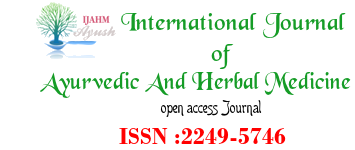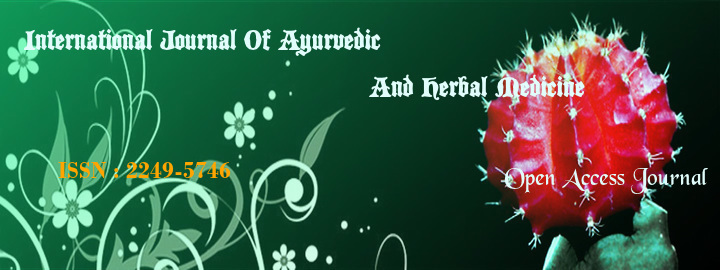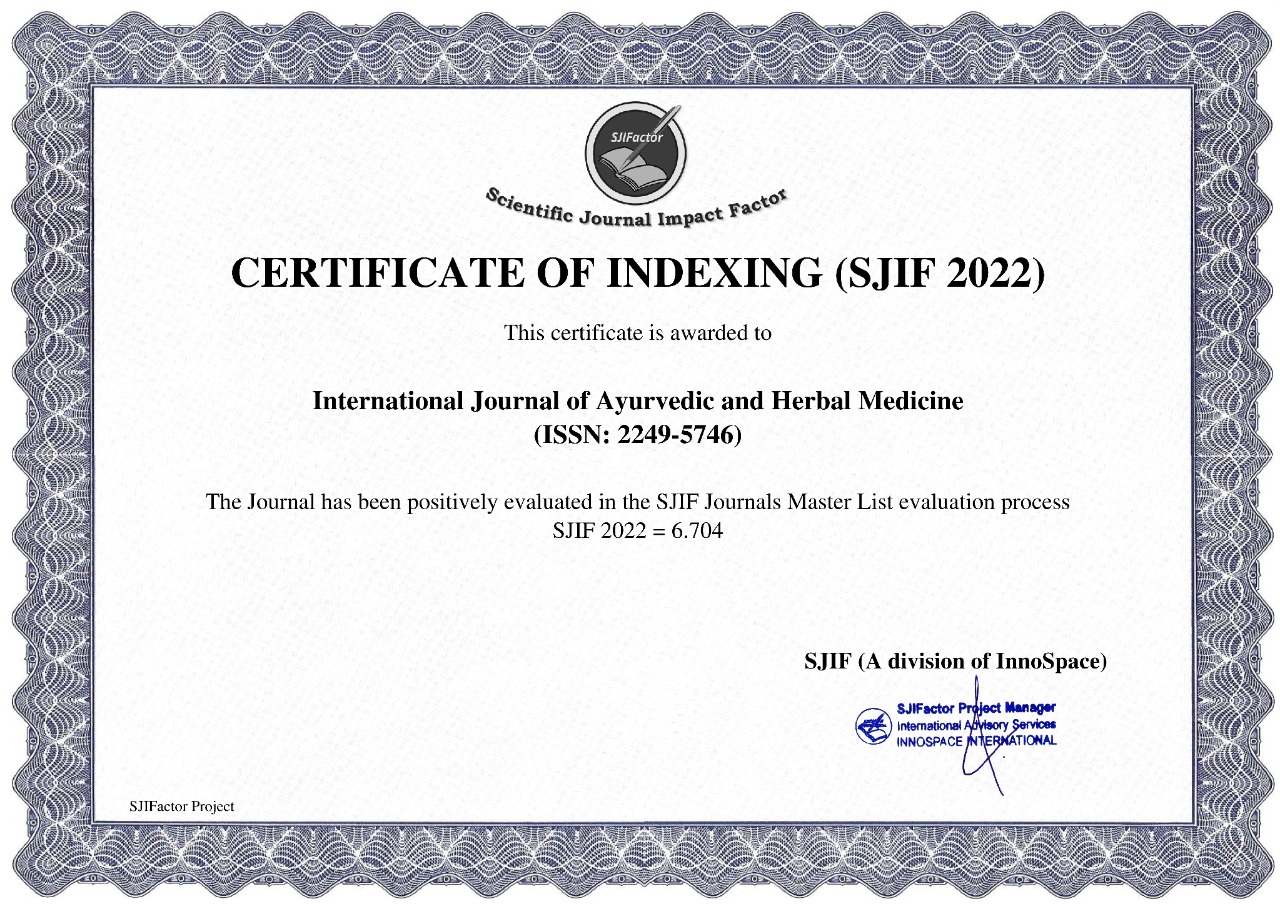


Dr. Das Nabanita
RARIGID, CCRAS
Abstract:-
There is no direct description of the disease Hypothyroidism in the classics of Ayurveda. Most Ayurvedic physicians correlate Hypothyroidism with Galaganda which is mentioned in the classics as swelling in the neck. Galaganda resembles Goitre however Goitre has other causes too apart from hypothyroidism. Some scholars even co-relate Kaphaja soth with myxedema of hypothyroidism due to presence of non pitting oedema. All these are but a few clinical features of hypothyroidism where the manifestation is due to defective tissue metabolism. . The main function of Thyroid Hormone is to control the rate of metabolism in the tissues. In Hypothyroidism this rate is slowed down and there is decreased tissue metabolism. This slows down the rate of ATP synthesis, protein synthesis, hampers carbohydrate and lipid metabolism. The hypometabolism that occurs in hypothyroidism is similar to the concept of Manda Agni. Manda Agni leads to the various clinical features similar to features of Hypothyroidism. Accumulation of sub-metabolites like glycosaminoglycans in hypothyroidism, can be co-related with mandagni at the tissue (dhatu) level where decrease in dhatwagni leads to formation of abnormal dhatu(1). Hence we can incorporate the concept of Mandagni in the treatment of hypothyroidism for better management.
Key words: Hypothyroidism, Hypometabolism, Tissue metabolism, Mandagni, Dhatwagni.
REFERENCES
1. Dr. Anna Moreswar Kunte, Navre KRS, Astanga Hrdaya of Vagbhata, Varanasi,Chaukhamba bharati Prakashan,2011,188p
2. Ambika Gopalakrishnan Unnikrishnan, Usha V Menon, Thyroid disorders in India: An epidemiological perspective, Indian Journal of Endocrinology and Metabolism, PMID: 21966658, Year : 2011, Volume : 15, Issue : 6, Page : 78-81
3. Dutta Choudhury S,Hypothyroidism - A common Phenomenon, The Clarion ISSN : 2277-1697, Volume I Number I February (2012) pp 21-24
4. Saravanan P, Chau WF, Roberts N, Vedhara K, Greenwood R, Dayan CM, Psychological well-being in patients on 'adequate' doses of l-thyroxine: results of a large, controlled community-based questionnaire study. Clin Endocrinol (Oxf), PMID: 12390330, Nov 2002; 57(5):577-85.
5. Wekking EM1, Appelhof BC, Fliers E, Schene AH, Huyser J, Tijssen JG, Wiersinga WM, Cognitive functioning and well-being in euthyroid patients on thyroxine replacement therapy for primary hypothyroidism, Eur J Endocrinol, PMID: 16322379, Dec 2005;153(6):747-53
6. P Saravanan, C M Dayan, Understanding Thyroid Hormone Action and The Effects of Thyroid Hormone Replacement – Just The Beginning Not the end, Hot Thyroidol.; Online ISSN: 2075-2202
7. Ali J Chakera, Simon HS Pearce and Bijay Vaidya, Treatment for primary hypothyroidism: current approaches and future possibilities, Drug Des Devel Ther. PMCID: PMC3267517, 2012; vol. 6: 1–11.
8. Susruta Samhita, Bhanumati commentary by Cakrapanidatta, Krishnadas Academy, Varanasi, 2001, chap-15,112-125.
9. Dr. Brahmananda Tripathi, Caraka Samhita, Chaukhamba Sanskrit Pratisthan, edition-2004, Vol-II, Chap 15,551-560.
10. Concept of agni and ahara paka (metabolic transformation) in Ayurveda Goverdhanam vani, J. S. R. A. Prasad, IAMJ, ISSN 2320 5091,vol 1, Issue 4, July- Aug 2013.
11. Dr. Anna Moreswar Kunte, Navre KRS, Astanga Hrdaya of Vagbhata, Varanasi,Chaukhamba bharati Prakashan,2011,188p
12. Terry j. Smith, Rebecca S. Bahn and Colum A. Gorman, Connective Tissue, Glycosaminoglycans, and Diseases of the Thyroid, Endocrine Reviews ,Online ISSN: 1945-7189, August 1989 vol. 10 no. 3 366-391
13. Jens Mittag, Peripheral Regulation of Energy Metabolism by Thyroid Hormones, www.hotthyroidology.com
14. Greg Kelly, ND, Peripheral Metabolism of Thyroid Hormones: A Review, Alternative Medicine Review, Aug 2000, p. 306. Academic One File, Accessed 20 july 2017
15. Blennemann B, Moon YK, Freake HC, Tissue-specific regulation of fatty acid synthesis by thyroid hormone, Endocrinology, PMID: 1733712,1992 Feb;130(2):637-43
16. Pucci E, Chiovato L, Pinchera A, Thyroid and lipid metabolism, Int J Obes Relat Metab Disord, PMID:10997623, 2000 Jun;24 Suppl 2:S109-12.
index






















